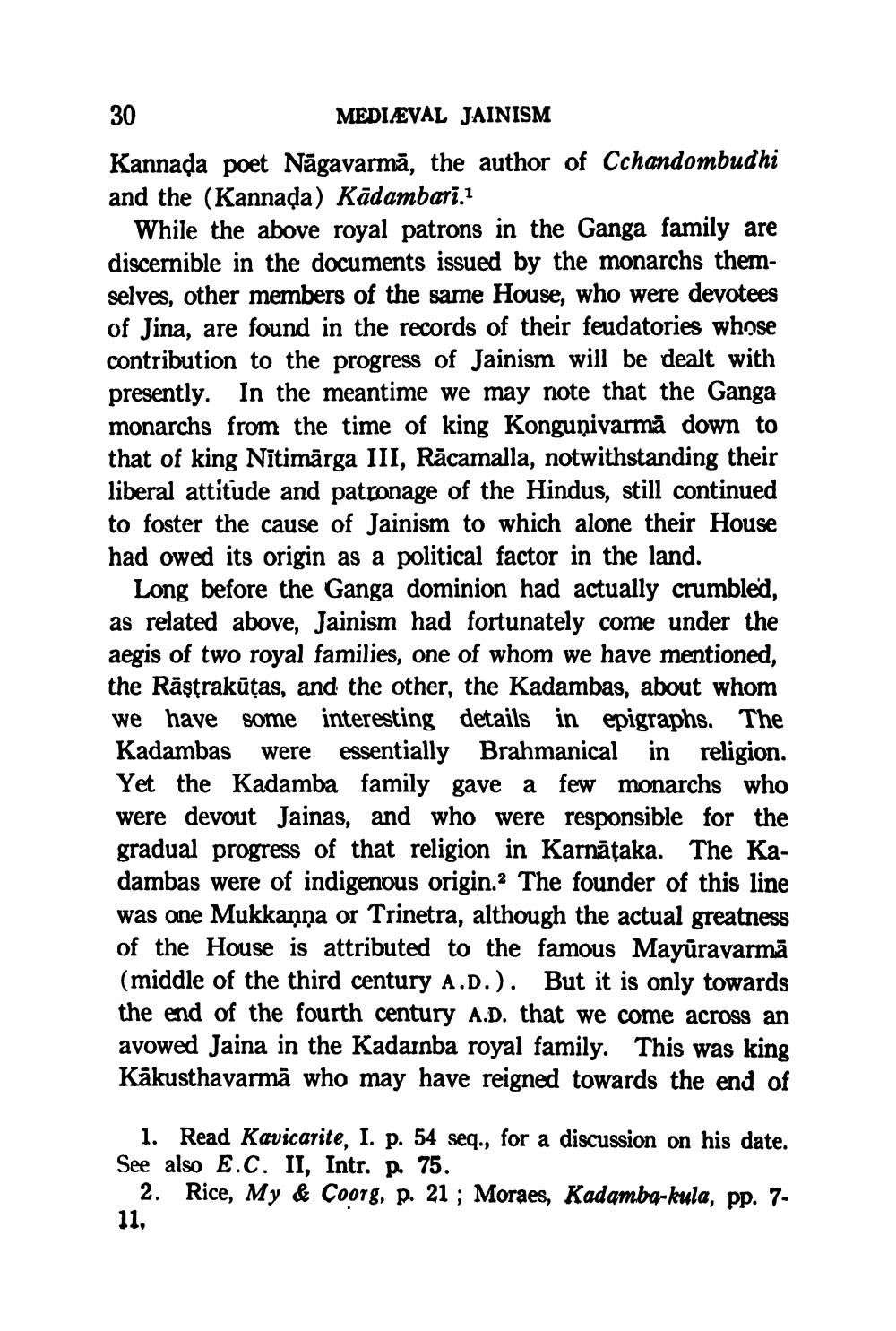________________
30
MEDIÆVAL JAINISM Kannada poet Nāgavarmā, the author of Cchandombudhi and the (Kannada) Kādambarī.1
While the above royal patrons in the Ganga family are discernible in the documents issued by the monarchs themselves, other members of the same House, who were devotees of Jina, are found in the records of their feudatories whose contribution to the progress of Jainism will be dealt with presently. In the meantime we may note that the Ganga monarchs from the time of king Konguņivarmā down to that of king Nītimārga III, Rācamalla, notwithstanding their liberal attitude and patronage of the Hindus, still continued to foster the cause of Jainism to which alone their House had owed its origin as a political factor in the land.
Long before the Ganga dominion had actually crumbled, as related above, Jainism had fortunately come under the aegis of two royal families, one of whom we have mentioned, the Rāştrakūtas, and the other, the Kadambas, about whom we have some interesting details in epigraphs. The Kadambas were essentially Brahmanical in religion. Yet the Kadamba family gave a few monarchs who were devout Jainas, and who were responsible for the gradual progress of that religion in Karnāțaka. The Kadambas were of indigenous origin. The founder of this line was one Mukkaņņa or Trinetra, although the actual greatness of the House is attributed to the famous Mayūravarmā (middle of the third century A.D.). But it is only towards the end of the fourth century A.D. that we come across an avowed Jaina in the Kadarnba royal family. This was king Kākusthavarmā who may have reigned towards the end of
1. Read Kavicarite, I. p. 54 seq., for a discussion on his date. See also E.C. II, Intr. R 75.
2. Rice, My & Coorg, p. 21; Moraes, Kadamba-kula, pp. 711,




